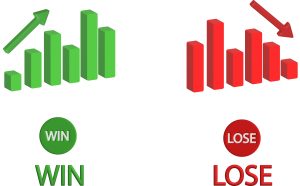
If you’re involved in trading, you’re probably wondering how to measure the performance of your trades accurately. Understanding this is vital as it helps you make informed investments and minimize potential losses. The good news is there’s a wealth of metrics and tools available to do just that. This article will guide you through several effective methods to gauge the performance of your trades, offering tips and considerations to ensure you have a comprehensive understanding of your trading activities. From explaining basic performance ratios to exploring sophisticated analytical tools, you’ll soon be well-equipped to evaluate your trading performance with confidence and precision.
Understanding the Need to Measure Trading Performance
Trading, by its nature, is a form of investment that requires constant monitoring and measuring to ensure that you are gaining the maximum return out of your investment. Whether you are a novice or seasoned trader, the importance of measuring trading performance cannot be overstated.
Highlighting the importance of performance measurement
Performance measurement is vital as it allows you to gauge your success in the market. It provides you with crucial information about how well your strategies are working and whether your trades are profitable. By measuring your trading performance, you can identify areas of improvement and make necessary adjustments to maximize your returns. In other words, it provides a concrete foundation upon which you can build and refine your trading strategies.
Linking successful trading to performance measurement
Successful trading is heavily linked to performance measurement. The best traders are those who are constantly observing and analyzing their perormance, and making strategic decisions based on what they learn from their metrics. Therefore, if you aim for success in trading, understanding your trading performance is not just important – it’s imperative.
Basic Concepts in Trading Performance Measurement
Before we dive into the methods and tools you can use to measure your trading performance, it’s important to familiarize yourself with some of the basic concepts of trade performance measurement.
Defining common terminologies
There are many terms you need to understand when discussing trading performance. This includes understanding profit and loss (P&L), return on investment (ROI), risk-reward ratio, drawdown, Sharpe ratio, profit factor, and win-loss ratio, among others. Each of these terminologies provides unique perspectives about your trading performance.
Understanding profit and loss
The most basic unit of measurement in trading is profit and loss. In its simple definition, profit is the positive yield from your trades and loss is a negative result where you’ve spent more than you’ve earned from your trades.
Explaining the role of percentage returns
In terms of trading, percentage return is a measurement of the profit or loss made on a trade expressed as a percentage of the initial investment. The higher the percentage return, the more profit you’ve made on your trade. This is a valuable indicator, because it allows you to compare the profitability of different trading strategies, regardless of the size of the initial investment.
Existing Solutions for Measuring Trade Performance
There are several ways to measure your trading performance. Some use manual calculation while others leverage digital tools to analyze and present the data.
Using trading software features
Many trading software offer built-in features to measure trading performance. These features vary from simple profit and loss calculators to advanced analytical tools that can assess multiple metrics from trade history.
Utilizing online trading performance calculators
Online calculators are another tool you can use to assess your trading performance. These calculators are easy to use and can provide insights on various trading metrics, including, but not limited to, ROI, risk-reward ratio, and win-loss ratio.
Taking advantage of brokerage account statements
Brokerage account statements are a valuable resource for understanding your trading performance. These statements can provide insights into your successful and unsuccessful trades, and help you track your trading activities over time.
Implementing a Performance Measurement Strategy
Having understood the importance of trading performance measurement, it’s time to devise a strategy for measuring your trading performance.
Creating a systematic approach to measuring performance
Implementing a systematic approach is key to a successful performance measurement strategy. This means setting specific times and parameters to measure your trading performance, using the right tools and methods consistently, and writing down your findings for further reference.
How often you should measure trade performance
The frequency of your performance measurement largely depends on your trading style. If you’re a day trader, you might want to assess your performance daily. However, for swing traders or long-term investors, a weekly or monthly review may be more appropriate.
Incorporating your trading goals into your strategy
Incorporating your trading goals into your performance measurement strategy is vital to ensure your measurements are aligned with your desired outcomes. Each trader has different goals based on their risk tolerance, investment capital, and trading style. Therefore, it’s important to tailor your performance measurement strategy to reflect these personal goals.
Role of Risk-Reward Ratio in Trade Performance
One of the keys to successful trading is understanding the balance between reward and risk. That’s where the Risk-Reward Ratio comes in.
Defining risk-reward ratio
Risk-reward ratio is a metric that traders use to compare the expected returns of an investment to the amount of risk they’re willing to undertake to achieve those returns. It is typically defined as the potential profit of a trade divided by the potential loss.
Understanding how to calculate risk-reward ratio
To calculate your risk-reward ratio, you’ll first need to determine your potential loss and potential profit for each trade. Once you have these figures, simply divide the potential profit by the potential loss. A ratio greater than 1 indicates a higher potential return versus the risk.
Interpreting a good versus bad risk-reward ratio
Generally, a high risk-reward ratio is considered better because it means the potential for profits is greater than the potential for losses. However, it’s important to understand that a high risk-reward ratio doesn’t always mean a trade will be profitable. Managing your trades and making decisions based on a comprehensive understanding of the market is equally crucial.
Understanding Drawdown as a Performance Measure
Another important concept in trading performance measurement is drawdown.
Definition of Drawdown
Drawdown measures the decline from a peak to a trough for an investment, usually quoted as a percentage of the peak. In essence, it represents the risk of a particular security or portfolio.
How to calculate Drawdown
Calculating drawdown involves determining the peak point of your investment, then identifying the lowest point following that peak. The difference between the peak and the low is your drawdown.
Interpreting Drawdown results
Drawdowns provide valuable insights into the risk and recovery of your trading strategy. A high drawdown could potentially signify a high-risk strategy, as it indicates that the strategy has experienced significant declines from its peak. On the other hand, a low drawdown could signify a more conservative strategy.
Using Sharpe Ratio to Measure Trading Performance
The Sharpe Ratio is another tool that traders often use to assess their performance.
What is Sharpe Ratio
The Sharpe Ratio measures the performance of an investment compared to a risk-free asset, after adjusting for its risk. Essentially, it helps you analyze how much return you are getting for the level of risk that you are taking on.
Understanding the calculation of Sharpe Ratio
The Sharpe Ratio is calculated by subtracting the risk-free rate from the expected return of your portfolio, then dividing the result by the standard deviation of your portfolio’s returns. The end figure represents the average return earned for every unit of risk you assume.
Interpreting Sharpe Ratio findings for your trades
A higher Sharpe Ratio indicates that your returns are higher relative to the risk you are taking on. Conversely, a lower Sharpe ratio could mean your strategy yields lower returns for the level of risk it poses. However, even though a high Sharpe ratio might be desirable, it’s crucial to consider other risk and performance measures to get a well-rounded picture of the overall performance.
Profit Factor as a Performance Gauge
Profit factor represents your gross profit divided by your gross loss.
Explaining what profit factor is
Profit factor is a ratio that measures the ability of your trades to generate profit. A profit factor greater than 1 implies that your gross profit exceeds your gross loss, which means you’re making profits.
Outlining the formula for Profit Factor
The formula for profit factor is simple: Gross Profit divided by Gross Loss. If the profit factor is greater than 1, that suggests a profitable strategy.
How the profit factor can influence your trading decisions
A higher profit factor is a positive indication of your trading performance. It essentially means you are making more profit for every dollar that you risk. You can leverage your profit factor to help guide your future trades and optimize your strategy for the greatest returns.
Appreciating the Role of Win-Loss Ratio
Win-Loss Ratio is another important consideration when looking at your trading performance.
Defining win-loss ratio
The win-loss ratio is the ratio of the total number of winning trades to the number of losing trades. It provides an idea of the probability of a trade being profitable.
Calculating your own win-loss ratio
Calculating the win-loss ratio involves dividing the total number of winning trades by the total number of losing trades.
Interpreting win-loss ratio findings
A higher win-loss ratio means you have more winning trades than losses. This suggests that your trading strategy has been successful. However, it’s essential to remember that a high win-loss ratio doesn’t always mean healthy profits. It’s important to still consider the magnitude of the wins and losses to have a comprehensive performance view.
Continuous Learning and Improvement in Trade Performance
To succeed in trading, continuous learning and improvement are key.
Importance of continuous learning in trading
The world of trading is continually changing, and strategies that work today might not work tomorrow. Thus, it’s crucial to keep learning and adjusting your strategies according to the trends and shifts in the market.
Ways to improve your trading performance
Improving trading performance involves refining strategies, trying new things, learning from mistakes, and constantly evaluating your performance. Stay informed about market trends and updates, and never stop learning.
Learning from successful traders
One of the best ways to improve your trading performance is by learning from those who have already achieved success in the field. Analyze their strategies, understand how they react to market changes, identify their strengths, and learn from their experience. This will broaden your perspective and provide valuable insights that you can integrate into your own trading strategy.
Summing up, the performance of your trades is not only about the returns you make but also about understanding your trading patterns, managing risks, and constantly improving your strategy. By paying attention to these aspects, you can maximize your returns and achieve long-term success in trading.







